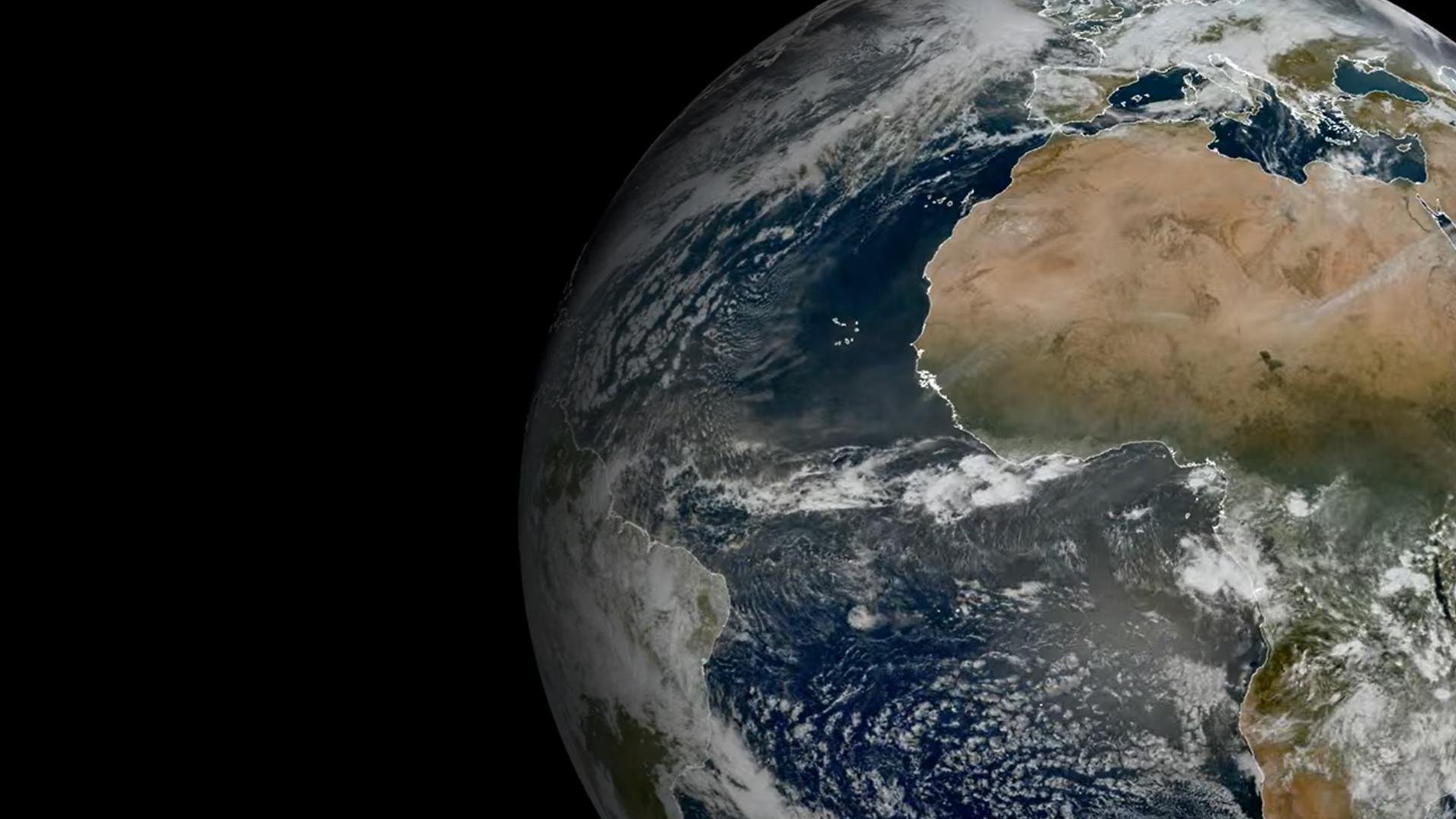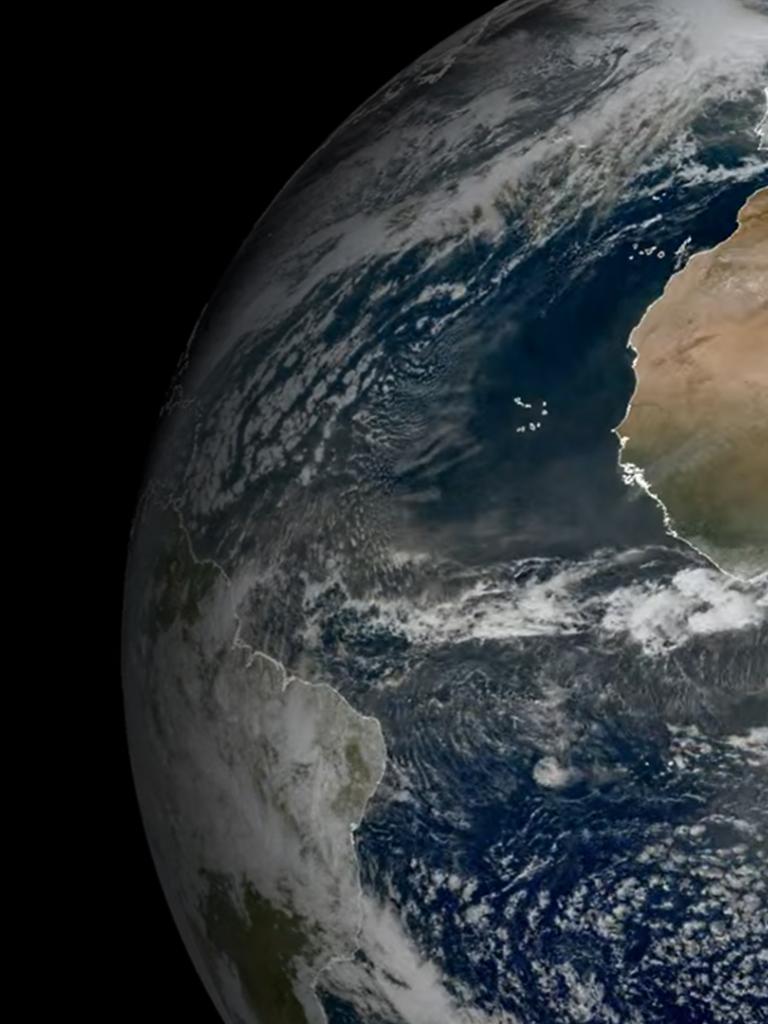09 July 2025
04 July 2025
About
Version 1 of LESSSR was developed in the context of a previous external contract in 2019. It complements the GSICS Implementation of the ROLO model (GIRO), which was developed at EUMETSAT and currently serves as the lunar irradiance reference model within MICMICS. These models serve a dual-purpose:
- i) To support the monitoring of the radiometric performances of EUMETSAT-operated imagers that have the capability to regularly acquire lunar imagery.
- ii) To support radiometric performance assessment and potential calibration (e.g. inter-band and temporal) for instance during commissioning or de-commissioning activities using dedicated lunar acquisitions.
The purpose of the study was to leverage recent developments in the processing of SCIAMACHY and GOME-2 data to enhance the LESSSR model. An essential aspect of this project was to revisit the current mathematical formulation of the modelled lunar reflectance in LESSSR, and to identify and implement potential improvements.
Furthermore, with the availability of a GOME-2 lunar reflectance dataset (i.e. GOME-2 observations processed similarly to SCIAMACHY lunar spectra), the project aimed to develop an innovative inter-calibration algorithm. This algorithm would enable comparisons between SCIAMACHY and GOME-2 based on their lunar irradiance/reflectance observations and could potentially be extended to future spectrometers capable of observing the Moon.
The range of applicability of the EUMETSAT MICMICS Lunar Calibration System (LCS) covers the reflective part of the solar spectrum, between 350nm and 2250nm, allowing it to support multi-mission vicarious calibration activities for the imaging instruments operated by EUMETSAT. Currently, the instruments in scope or potentially in scope are:
- SEVIRI (Spinning Enhanced Visible Infra-Red Imager), aboard the Meteosat Second Generation platforms. Currently, three instruments are in space, with nominal reference grid central positions ranging from 0° longitude (for the nominal full-disk SEVIRI mission) to 45.5°E
- FCI (Flexible Combined Imager), aboard the Meteosat Third Generation Imager platforms.
- LI (Lightning Imager), aboard the Meteosat Third Generation Imager platforms.
- OLCI (Ocean and Land Colour Imager), aboard the Sentinel-3 platforms. Currently, two instances are in operations.
- SLSTR (Sea and Land Surface Temperature Radiometer), aboard the Sentinel-3 platforms. Currently, two instances are in operations.
- METimage (Meteorological Imager), aboard the Second Generation of the EUMETSAT Polar System.
- 3MI (Multi-viewing Multi-channel Multi-polarisation Imager), aboard the Second Generation of the EUMETSAT Polar System.
- MAP (Multi-Angle Polarimeter), aboard the upcoming CO2 Monitoring mission
- CLIM (Cloud Imager), aboard the upcoming CO2 Monitoring mission
Retro-actively, LCS can also be applied to past instruments, such as MVIRI (the first generation Meteosat Visible Infra-Red Imager).
In addition, the LCS will also be applied to other instruments, such as GSICS references for reflective solar bands, such as VIIRS (Visible/Infrared Imager Radiometer Suite) aboard NOAA-20 polar platform, to enable inter-calibration between sensors using the Moon as a calibration transfer target.
Objectives
The objectives of the project were addressed through the following activities:
- Objective 1: Update version 1.0 of the LESSR model using the latest SCIAMACHY processed data provided by the ESA FDR4ATMOS project (version 10).
- Objective 2: Revisit the LESSR and ROLO/GIRO model formulations and propose improvements to the current lunar reflectance model formulations, based on an analysis of uncertainties using a revised fitting procedure to derive new model parameters.
- Objective 3: Based on the outcome of the analysis conducted under Objective 2, implement a new formulation for the LESSR model. This updated version is referred as LESSR version 2.
- Objective 4: Upon the availability of a GOME-2 lunar reflectance dataset (i.e. GOME-2 observations processed in the same way as SCIAMACHY lunar spectra), and using the enhanced LESSR model, develop an inter-calibration algorithm to compare SCIAMACHY and GOME-2 via their lunar irradiance/reflectance observations. This task was optional within the project scope.
Overview
The initial version of the EUMETSAT LESSSR model, developed in 2019 under an external contract, has been updated and validated using SEVIRI lunar measurements. The model relies on a combination of in-flight SCIAMACHY measurements, and ground-based RELAB data.
As part of ESA’s FRD4ATMOS project, the radiometric quality of the SCIAMACHY lunar dataset was improved and subsequently provided to EUMETSAT to support the update of the LESSSR model parameters.
The LESSSR model complements the GIRO model and serves as a new asset within the EUMETSAT MICMICS infrastructure. This project has contributed to a better understanding of the phase dependence observed, particularly with GIRO in the SWIR spectral range when compared with satellite datasets, such as Meteosat lunar observations acquired by the SEVIRI instruments.
The LESSSR model describes the disk-equivalent lunar reflectance between 300nm and 2500nm with a spectral resolution of 5nm, for a lunar phase range between -80 and 20 degrees, which is the lunar observational range for SCIAMACHY. The applicability range of lunar phases could be further extended beyond 30 degrees by including GOME-2 lunar measurements in the mix of observations used for inferring the lunar reflectance model parameters.

The project also aimed to further investigate which formulation - in the form of base functions - best describes the lunar full-disk irradiance. SCIAMACHY and RELAB measurements served as the baseline dataset for this analysis.
The selected set of base functions was fitted to the complete SCIAMACHY/RELAB dataset to determine the final base functions, fitting parameters (i.e. the base function weights), and their associated uncertainties. This approach was applied spectrally, allowing the derivation of a set of base functions and parameters for each model wavelength between 350 nm and 2500 nm. Table 1 provides an example of base functions and associated parameters for the model wavelength at 550 nm.
Table 1: Example of base functions, weighting parameters and associated uncertainties for the 550nm wavelength. Phase = lunar phase angle; Vlon/Vlat = selenographic longitude and latitude of the observer; Hlon/Hlat: selenographic longitude and latitude of the sun
| 550nm | |||||
|---|---|---|---|---|---|
| DESCRIPTION | P | P_SIGMA | REL_ERROR | BF_EXPECTED | VAR_CONTRIB |
| offset | -2.41 | 0.0125 | 0.00519 | 1 | 0.000156 |
| sqrt(abs(PHASE))^3 | -0.00501 | 0.000184 | 0.0368 | 202 | 0.00138 |
| 1d/abs(PHASE) | 3.99 | 0.228 | 0.0572 | 0.0358 | 6.67E-05 |
| abs(PHASE)^2 | 0.000411 | 2.90E-05 | 0.0706 | 1.29E+03 | 0.0014 |
| 1d/sqrt(abs(PHASE))^3 | -6.64 | 0.541 | 0.0815 | 0.00619 | 1.12E-05 |
| abs(PHASE)^3 | -1.48E-06 | 1.26E-07 | 0.0851 | 5.69E+04 | 5.18E-05 |
| 1d/abs(PHASE)^2 | 3.38 | 0.361 | 0.107 | 0.00108 | 1.53E-07 |
| Vlon | 0.0012 | 0.000141 | 0.117 | 3.88 | 2.97E-07 |
| Vlon*Phase^2 | -6.80E-07 | 1.36E-07 | 0.199 | 5.41E+03 | 5.38E-07 |
| PHASE | -0.000338 | 6.81E-05 | 0.201 | 31.4 | 4.56E-06 |
| Vlon*Phase | -4.04E-05 | 8.81E-06 | 0.218 | 132 | 1.35E-06 |
| Vlat*Phase | -5.51E-05 | 1.75E-05 | 0.318 | 120 | 4.43E-06 |
| Vlat*Phase^2 | -3.02E-07 | 1.13E-07 | 0.374 | 4.33E+03 | 2.39E-07 |
| Vlat | -0.00187 | 0.0008 | 0.427 | 4.08 | 1.06E-05 |
| Vlon*Hlat | 0.000399 | 0.000208 | 0.52 | 3.89 | 6.54E-07 |
| Vlat*Hlat | -0.000409 | 0.000231 | 0.564 | 4.29 | 9.79E-07 |
| Hlat*Phase | 0.000131 | 8.43E-05 | 0.644 | 30.4 | 6.55E-06 |
| (Hlon+phase-vlon) | -0.000391 | 0.000454 | 1.16 | 0.157 | 5.06E-09 |
| Vlon*Vlat | -3.73E-05 | 5.26E-05 | 1.41 | 16.1 | 7.14E-07 |
| (Hlon+phase-vlon)*Phase | -8.20E-05 | 0.000117 | 1.42 | 5.46 | 4.07E-07 |
| 1d/PHASE | 0.00278 | 0.00421 | 1.51 | 0.0358 | 2.27E-08 |
| Hlat | 0.00206 | 0.00369 | 1.79 | 0.989 | 1.33E-05 |

Figure 2, Figure 3 and Figure 4 show the ratio between LESSR v2.0 to LESSR v1.0, LESSR v1.1, and GIRO, respectively. These ratios are plotted as a function of wavelength for each SCIAMACHY measurement, with colour indicating the lunar phase angle.
The absolute offsets observed between LESSR v2.0, LESSR v1.0 and GIRO are consistent with findings from the model inter-comparison exercise presented at the 4th GSICS/IVOS Lunar Calibration Workshop in 2023.



The inter-calibration between the GOME-2 series and SCIAMACHY, based on the LESSR model, has been successfully achieved, as shown in Figure 5. The results are provided with associated uncertainties.
The analysis reveals wavelength-dependant structures, highlighting the spectral differences in their intercalibration with SCIAMACHY. These results were delivered to ESA for use in the context of the FDR4ATMOS project.
The associated uncertainties reflect measurement uncertainties, which may include factors such as calibration errors or pointing inaccuracies.

This project led to an improved version of the LESSSR model, based on SCIAMACHY and RELAB data, through the definition of a new set of base functions. While supporting the radiometric assessment of instruments currently in operation at EUMETSAT, it also paves the way for the inter-calibration of spectrometers such as SCIAMACHY, GOME-2 and other similar instruments that have observed or will observe the Moon.

